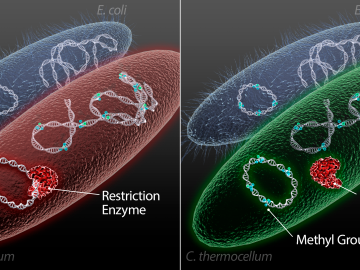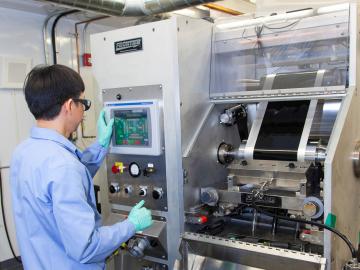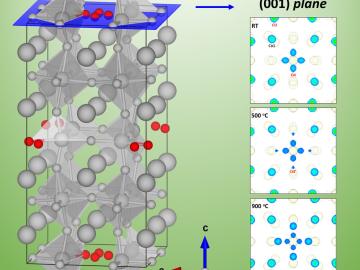
Filter News
Area of Research
- (-) Energy Science (27)
- (-) Neutron Science (4)
- (-) Quantum information Science (2)
- Advanced Manufacturing (1)
- Biology and Environment (4)
- Computational Engineering (1)
- Computer Science (6)
- Energy Sciences (1)
- Fusion Energy (1)
- Materials (15)
- Materials for Computing (3)
- National Security (7)
- Nuclear Science and Technology (5)
- Supercomputing (20)
News Topics
- (-) Big Data (3)
- (-) Biotechnology (2)
- (-) Cybersecurity (4)
- (-) Energy Storage (22)
- (-) Space Exploration (1)
- 3-D Printing/Advanced Manufacturing (30)
- Advanced Reactors (3)
- Artificial Intelligence (6)
- Bioenergy (19)
- Biology (1)
- Biomedical (11)
- Chemical Sciences (2)
- Clean Water (6)
- Composites (3)
- Computer Science (25)
- Coronavirus (14)
- Environment (32)
- Exascale Computing (1)
- Grid (9)
- High-Performance Computing (1)
- Isotopes (1)
- Machine Learning (7)
- Materials (2)
- Materials Science (22)
- Mathematics (2)
- Mercury (1)
- Microscopy (6)
- Molten Salt (1)
- Nanotechnology (11)
- National Security (1)
- Neutron Science (51)
- Nuclear Energy (5)
- Physics (6)
- Polymers (5)
- Quantum Science (10)
- Security (2)
- Summit (6)
- Transportation (24)
Media Contacts

To better determine the potential energy cost savings among connected homes, researchers at Oak Ridge National Laboratory developed a computer simulation to more accurately compare energy use on similar weather days.

Researchers at the Department of Energy’s Oak Ridge National Laboratory have received five 2019 R&D 100 Awards, increasing the lab’s total to 221 since the award’s inception in 1963.

Two of the researchers who share the Nobel Prize in Chemistry announced Wednesday—John B. Goodenough of the University of Texas at Austin and M. Stanley Whittingham of Binghamton University in New York—have research ties to ORNL.

Three researchers at Oak Ridge National Laboratory will lead or participate in collaborative research projects aimed at harnessing the power of quantum mechanics to advance a range of technologies including computing, fiber optics and network

Scientists at the US Department of Energy’s Oak Ridge National Laboratory have demonstrated a method to insert genes into a variety of microorganisms that previously would not accept foreign DNA, with the goal of creating custom microbes to break down plants for bioenergy.

Scientists at Oak Ridge National Laboratory studying quantum communications have discovered a more practical way to share secret messages among three parties, which could ultimately lead to better cybersecurity for the electric grid

A team of researchers at Oak Ridge National Laboratory have demonstrated that designed synthetic polymers can serve as a high-performance binding material for next-generation lithium-ion batteries.

Ionic conduction involves the movement of ions from one location to another inside a material. The ions travel through point defects, which are irregularities in the otherwise consistent arrangement of atoms known as the crystal lattice. This sometimes sluggish process can limit the performance and efficiency of fuel cells, batteries, and other energy storage technologies.

The use of lithium-ion batteries has surged in recent years, starting with electronics and expanding into many applications, including the growing electric and hybrid vehicle industry. But the technologies to optimize recycling of these batteries have not kept pace.

A University of South Carolina research team is investigating the oxygen reduction performance of energy conversion materials called perovskites by using neutron diffraction at Oak Ridge National Laboratory’s Spallation Neutron Source.


